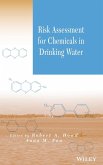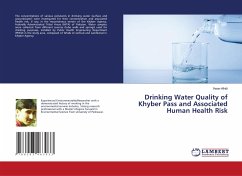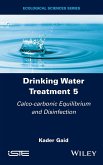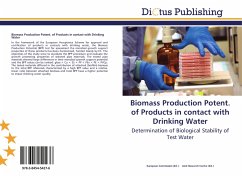Chlorination has been the major strategy for disinfection of drinking water in Taiwan. But it accompanied the disinfection by-products (DBPs) question that exist the cancer risk for human being. Trihalomethanes (THMs) species is the main DBPs in drinking water treatment; they had verified carcinogenic materials in animal experiment and epidemiology investigation consequences respectively. In view of this reason, this study would like to discuss the distribution situation of THMs species in Taiwan. This research is a procedure combined the statistical analysis that THMs species data used in this study collected from the Taiwan Water Corporation (TWC) since 1998 to 2002, evaluated the distribution at temporal-spatial factors in treatment plant and subscriber of Taiwan.Cancer risk analysis and assessment is the next tropic after statistical analysis. It processed the hazardous identification, dose-response assessment, exposure assessment and risk characterization procedure to interpret the cancer risk condition of THMs species in Taiwan. Finally, System Dynamic Model is the principal role to integrate with social, economic influence parameters and cancer risk assessment to process the preliminary analysis about the relation between water price and cancer risk. We wish the procedure can become a method for policy analysis, which is our contribution in the research.Explicitly, the objective of this study classified to evaluate the temporal-spatial factors of THMs species concentration in the distribution situation of Taiwan. A multiple regression model for THMs formation was generated for predicting THMs in the finished water. An interaction was observed between the pH, water temperature and THMs formation. The increasing values of pH and temperature are lead to a higher production of THMs. Consequence exhibited that Taiwan is conformed to the tendency.This study conducts risk assessment for an array of health effects that may result from exposure to DBPs, andthat require an analysis of the relationship between exposure and health-related outcomes. THMs species have been verified the principal DBPs in the process on the disinfection of drinking water. Consequence of epidemiology and animal studies exhibited THMs species are carcinogens caused the perspective cancers of bladder, colon, rectum and liver etc. Multistage of Benchmark model, Monte Carlo Simulation (MCS) and sensitive analysis were utilized to estimate the cancer risk analysis and assessment respectively.This study integrated the risk assessment steps of DBPs of THMs in the drinking water formulated by USEPA with society and economical policy influence parameters in the Tai-Chung city of Taiwan. Evaluating the most applicable and optimum quantification level of health risk is the main purpose of this paper. It adopted the structural questionary modes, 344 are effective and 6 are refused. The successful rate is 98.29?. utilized the Chi test in the 95% confidence level, the consequence revealed the sex, age and the average incoming of households versus the dependent variable has more higher correlation. Apply the regression analysis has indicated that improved the water quality may decrease the health risk; the reasonable part of payment cost is correlated with sex and educational level, respectively. Men and high educational level exist high acceptable about the higher payment to decrease the health risk.It integrated with the data of THMs risk analysis and assessment, society and economical influence parameters to simulate the system dynamic model to quantity the influence of all kind of policies to system. The consequences would provide different faces for decision-making and solve the impact level between the expectation of decreasing risk and the increasing payment to improve the characteristics of water quality.








